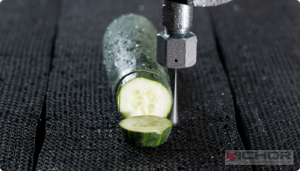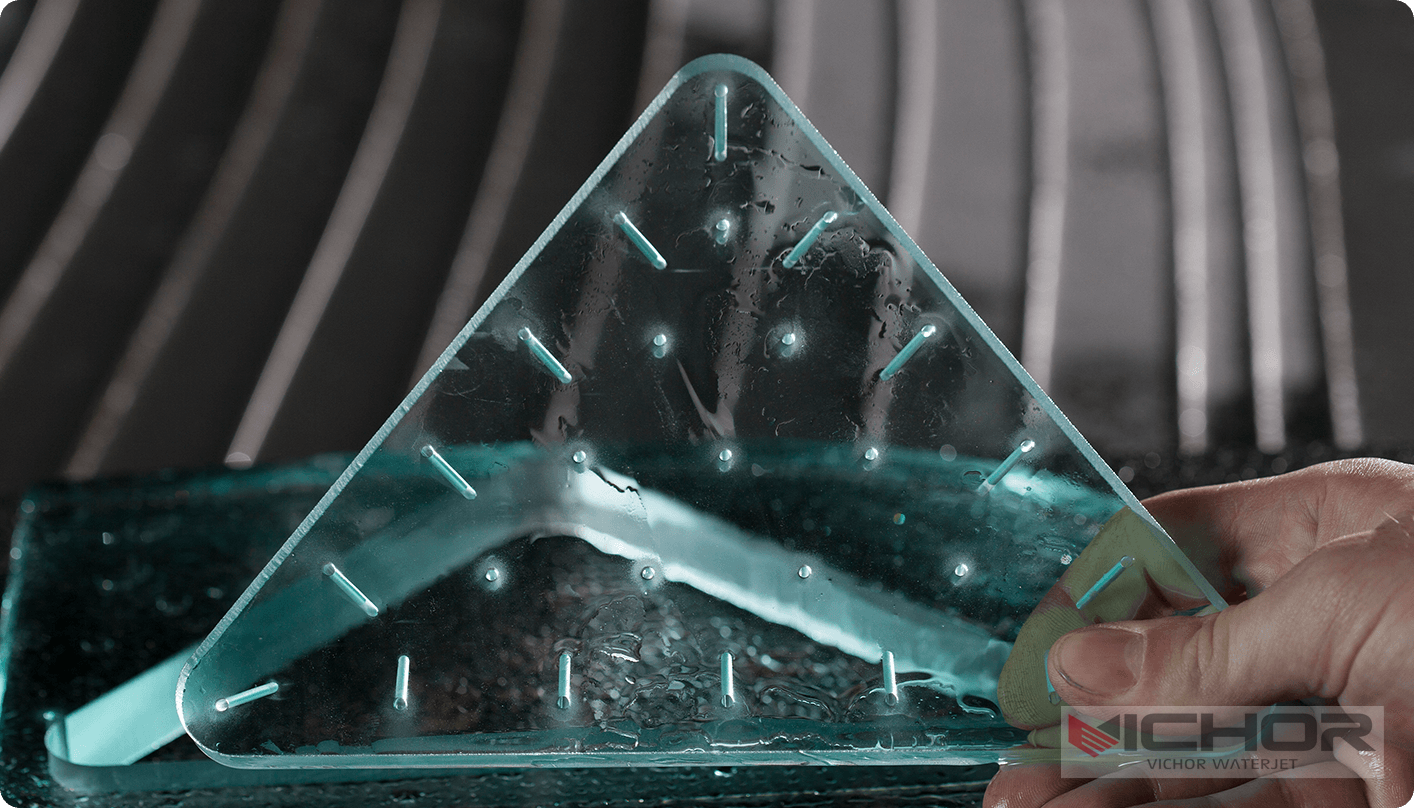
7 Revolutionary Benefits of Water Knife Cutting Machines in Modern Manufacturing
In today’s fast-paced industrial landscape, precision and efficiency are paramount. Among the myriad of cutting technologies available, the water knife cutting machine stands out as a versatile and innovative solution. This high-pressure waterjet system uses a focused stream of water—often mixed with abrasives—to slice through materials with incredible accuracy. Whether you’re in aerospace, automotive, or custom fabrication, understanding the capabilities of a water knife cutting machine can transform your production processes. In this comprehensive guide, we’ll explore everything from core functionalities and comparisons to cost considerations and supplier tips, helping you make an informed decision for your business.
What is a Water Knife Cutting Machine?
A water knife cutting machine, commonly referred to as a waterjet cutter, operates by propelling water at ultra-high pressures—typically between 60,000 to 90,000 psi—through a narrow nozzle. This creates a powerful stream capable of cutting through a wide range of materials, including metals, composites, glass, and stone. The process can be pure water cutting for softer materials or abrasive waterjet cutting for harder substances, where garnet or other abrasives are added to enhance cutting power. This technology is renowned for its cold-cutting nature, which eliminates heat-affected zones, preserving material integrity and reducing waste. As industries seek more sustainable and precise methods, the water knife cutting machine has become a go-to tool for applications demanding high tolerances and minimal environmental impact.
How Water Knife Cutting Compares to Other Cutting Technologies
When evaluating cutting methods, it’s essential to compare the water knife cutting machine with alternatives like laser, plasma, and mechanical cutting. Laser cutting excels in speed for thin metals but struggles with reflective materials and can introduce heat distortion. In contrast, a water knife cutting machine handles reflective surfaces effortlessly and avoids thermal damage, making it ideal for heat-sensitive materials. Plasma cutting is cost-effective for thick metals but produces a wider kerf and more slag, whereas waterjet cutting offers finer cuts with minimal material loss. Mechanical methods, such as sawing or milling, involve physical contact that can cause tool wear and stress on materials; the non-contact nature of a water knife cutting machine reduces wear and tear, extending equipment life. Overall, the versatility of a water knife cutting machine across diverse materials—from rubber to titanium—gives it a competitive edge in multi-industry applications.
Key Applications of Water Knife Cutting Machines Across Industries
The adaptability of the water knife cutting machine makes it invaluable in numerous sectors. In aerospace, it’s used for precision-cutting components like turbine blades and composite panels, where accuracy is critical for safety and performance. The automotive industry relies on waterjet systems for prototyping and producing intricate parts such as gaskets and interior trim, thanks to their ability to handle various materials without deformation. In architecture and design, a water knife cutting machine shapes stone, tiles, and glass for custom installations, enabling complex patterns and curves. Medical device manufacturing benefits from the hygienic, burr-free cuts achievable with waterjet technology, essential for implants and surgical tools. Even food processing industries utilize pure water cutting for portioning products without contamination. By integrating a water knife cutting machine, businesses can achieve higher productivity and innovation in their respective fields.
Choosing the Right Water Knife Cutting Machine for Your Needs
Selecting an appropriate water knife cutting machine involves considering factors like material types, production volume, and budget. Start by assessing the materials you’ll cut—softer items like foam or paper may only require a pure water system, while metals or ceramics need an abrasive water knife cutting machine. Next, evaluate the machine’s size and working area; larger beds suit big projects, whereas compact models are ideal for workshops with space constraints. Look for features such as CNC controls for automation, which enhance repeatability and reduce operator error. Additionally, consider pressure levels: higher psi machines cut thicker materials faster but may increase operational costs. Don’t overlook maintenance requirements; a robust water knife cutting machine with easy-access components can minimize downtime. Finally, review safety features and software compatibility to ensure seamless integration into your workflow. By methodically analyzing these aspects, you can invest in a water knife cutting machine that aligns with your long-term goals.
Cost and Pricing Factors for Water Knife Cutting Machines
Investing in a water knife cutting machine involves both upfront and ongoing expenses. Initial costs range from $50,000 for basic models to over $200,000 for high-end systems with advanced automation. Key price influencers include the machine’s cutting size, pressure capability, and brand reputation—though we avoid specific brands here, it’s wise to compare generic offerings based on performance metrics. Operational costs encompass abrasive materials (if used), water consumption, electricity, and maintenance parts like nozzles and pumps. For instance, an abrasive water knife cutting machine might incur higher consumable costs due to garnet usage, but it offers savings through reduced material waste. Leasing options or used equipment can lower entry barriers, but new machines often come with warranties and better efficiency. When budgeting, factor in training for operators and potential upgrades. Overall, a water knife cutting machine can deliver a strong ROI by boosting cut quality and reducing secondary processing, making it a worthwhile investment for many businesses.
Technology and Process Deep Dive into Water Knife Cutting
The engineering behind a water knife cutting machine is both sophisticated and efficient. It begins with a high-pressure pump that intensifies water pressure, often using intensifier or direct-drive systems. The water is then forced through a small orifice, creating a supersonic stream. In abrasive waterjet setups, abrasives are injected into the stream via a mixing tube, amplifying cutting power. The CNC system guides the nozzle along programmed paths, ensuring precise cuts based on digital designs. One standout feature is the omni-directional cutting capability, allowing complex shapes without tool changes. The process produces minimal kerf width, typically 0.02 to 0.05 inches, which maximizes material utilization. Advances in software now enable real-time monitoring and adjustment, optimizing performance for each job. Understanding this technology helps operators maintain their water knife cutting machine effectively, such as by regularly checking for nozzle wear or water filtration issues, to sustain peak efficiency and cut quality.
Finding Reliable Suppliers for Water Knife Cutting Machines
Sourcing a quality water knife cutting machine requires careful supplier evaluation. Begin by researching manufacturers and distributors online, focusing on those with positive reviews and industry certifications. Attend trade shows or webinars to see demonstrations and ask about after-sales support, including training and spare parts availability. Request quotes from multiple suppliers to compare pricing, but also inquire about lead times, installation services, and warranty terms. A good supplier should provide case studies or references showcasing their machines in action. Additionally, consider local support for quicker service responses. When discussing your needs, be clear about your application requirements to ensure the water knife cutting machine recommended fits your specific use cases. Building a relationship with a trustworthy supplier can lead to better deals and ongoing support, helping you maximize the benefits of your investment in waterjet technology.

Frequently Asked Questions About Water Knife Cutting Machines
Q1: What materials can a water knife cutting machine handle?
A1: A water knife cutting machine can cut a wide variety of materials, including metals like steel and aluminum, composites, glass, stone, ceramics, plastics, and even food products. Its versatility stems from the adjustable pressure and the option to use abrasives for harder substances.
Q2: How accurate is a water knife cutting machine compared to other methods?
A2: The accuracy of a water knife cutting machine is exceptional, typically within ±0.005 inches, thanks to CNC precision. It outperforms many mechanical methods and avoids the heat-related distortions of laser or plasma cutting, making it ideal for high-tolerance applications.
Q3: What are the main maintenance requirements for a water knife cutting machine?
A3: Regular maintenance for a water knife cutting machine includes checking and replacing nozzles, filters, and high-pressure seals, as well as monitoring the water quality and abrasive delivery system. Proper upkeep ensures longevity and consistent performance.
Q4: Is a water knife cutting machine environmentally friendly?
A4: Yes, a water knife cutting machine is considered eco-friendly because it uses water and natural abrasives, produces no hazardous fumes, and generates less waste due to its precise cuts. Water recycling systems can further reduce consumption.
Q5: How much does it cost to operate a water knife cutting machine daily?
A5: Daily operational costs for a water knife cutting machine vary based on usage but generally include electricity, water, abrasives, and maintenance. On average, expect costs to range from $10 to $50 per hour, depending on the machine type and material being cut.
In conclusion, the water knife cutting machine represents a dynamic advancement in cutting technology, offering precision, versatility, and efficiency across industries. By considering the insights shared here—from selection tips to cost analysis—you can leverage this tool to enhance your manufacturing capabilities. If you’re exploring options, remember to focus on your specific needs and partner with reliable suppliers to get the most out of your water knife cutting machine investment.
continue reading



